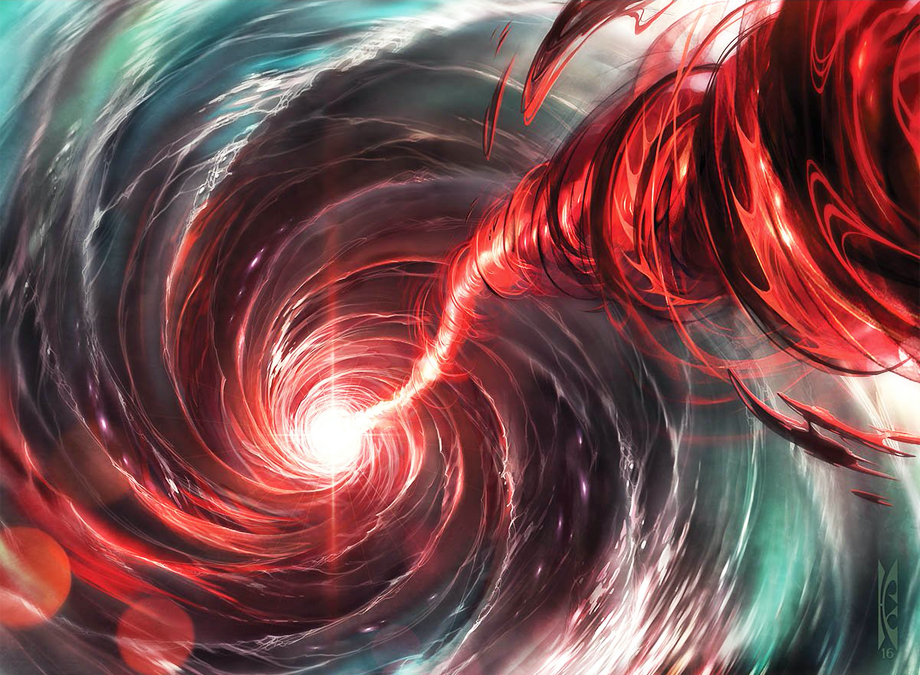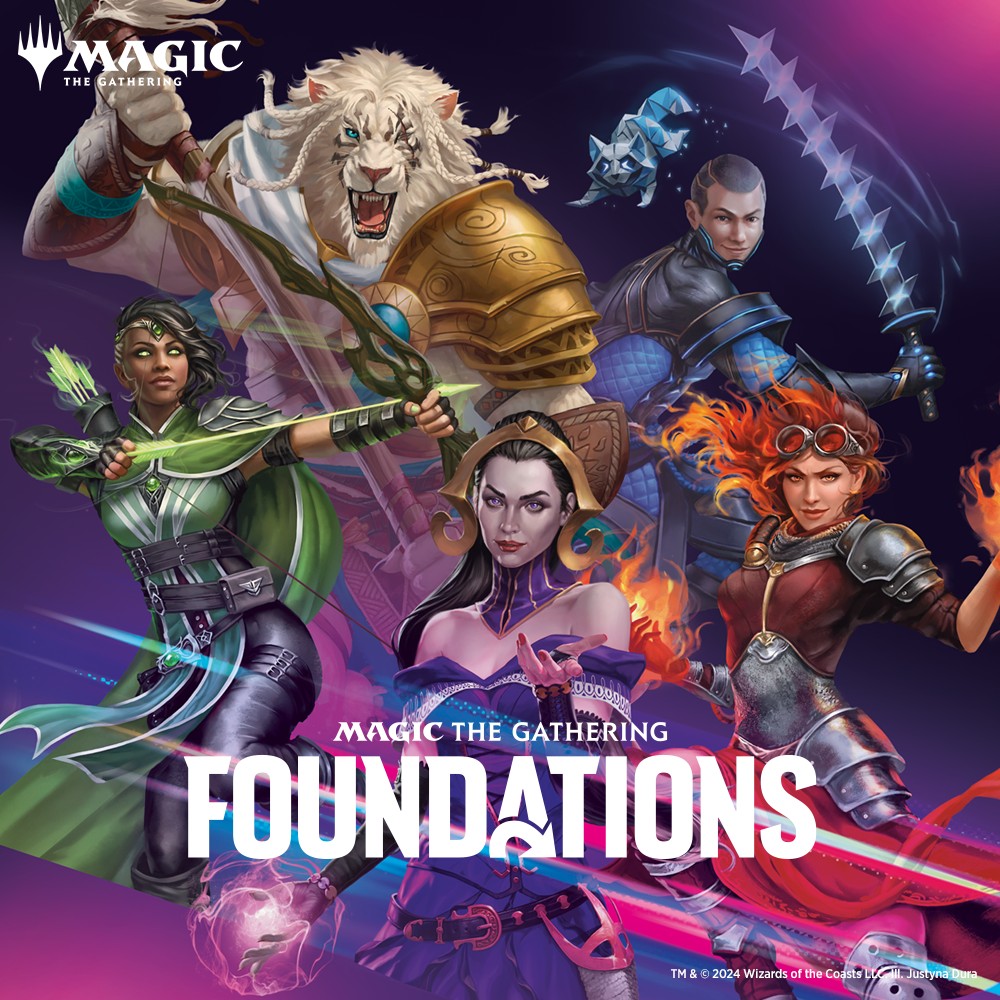Understanding the power level in Commander of cards and decks as they pertain to the format is a difficult task for many. Sometimes you’ll be playing with a few of your friends and one of them will just stumble into an infinite combo they didn’t know the deck had and resulting in a couple of players calling the deck too broken and asking them to swap decks. But was the overall deck really that broken? Sometimes the excitement of a new set will often cloud a player’s judgment as to how decks and cards interact with one another or just how unbeatable something really is. The fact is this is a singleton format, making it so that your one powerful card out of 99 is unlikely to be seen in every single game. Let’s talk about how we can analyze individual cards and overall decks in reference to their power level.
Individual Cards
Board Impact
When evaluating the power level of individual cards, you have to ask what kind of board state it plays towards and its impact. Take a fan favourite like Mulldrifter into account. It’s a 2/2 with Flying that replaces itself if cast for it’s normal casting cost. Not the best card given its high CMC, but it generates enough value and gains card advantage as you have drawn two cards for the cost of one creature. Now for comparison, look to the Red/White legend Aurelia, the Warleader. This creature has Haste, Vigilance, and Flying which is some nice window dressing for a creature but it impacts the board by increasing the value of each other creature you control on the field. Granting the ability for your board to get two combat steps as opposed to winning is a game-changing effect that will pull you directly into the driver’s seat of the game. Mulldrifter is a perfectly fine card from a value perspective but its effect on the board state suffers for this reason whereas cards like Aurelia, the Warleader are what will win you a game.
This same logic can be applied to cards of a lower converted mana cost or non-creature spells. Take Damnation as an example. An efficient way to wipe the entire board with little cost to yourself and gets around regeneration (outside of Totem Armor). Other types of interaction or even individual “win the game” cards also fall into the same camp. You spend so little mana to cast them and they generate such an overwhelming shift in power towards you they remain at a higher power level. These are the kind of cards like Thassa’s Oracle, Natural Order, Craterhoof Behemoth and Rhystic Study.
Strictly Better
When you’re upgrading your deck or looking at how good an individual card is, ask if there is a strictly better or strictly worse version of the card. Some great examples of this are Mana Drain as opposed to Counterspell or Craterhoof Behemoth as opposed to End-Raze Forerunners. The worse versions are often perfectly playable cards, but their impact on the board or the general capabilities of the card fall into a far lower category than their better alternative. Try a few games swapping out all your Counterspells for Mana Drains and you’ll feel a world of difference between the two cards more often than not.
But that’s just talking about a few specifics. Let’s talk about what makes a card strictly better or worse than the alternative. One of the main areas that can be more powerful is the mana cost/advantage generated. Mana Drain is a great example of this as it costs the same amount as Counterspell and offering the same effect. This also gains you a mana advantage while putting your opponent at a disadvantage. The gain is much greater than the cost generally and Counterspell only grants part of that effect.
Mana Cost
Another way to evaluate differences in power level is the actual converted mana cost of the spell. Having a similar effect at four mana or five, you should likely choose the cheaper option. Choosing a Wrath of God over a Fumigate is a good example of this. While you gain life potentially off of your Fumigate, you do have to wait an additional turn to play it in a faster game of Commander. This isn’t quite to the extent of being strictly better as there are certainly strong arguments for running Fumigate in certain decks. As a general rule of thumb, the more mana efficient version of the effect will be better as long as the downside isn’t large. An example of the downside is too large would be Bontu’s Last Reckoning. A solid enough board wipe but will cost at least six mana as you'll lose your next untap step for your lands. If you’re desperate to cut down on your curve and are running Seedborn Muse and friends this could be fine. However, in general, this card runs at a lower power level than Damnation.
Modularity
Card selection/modularity can also be a contributing factor. An example of this would be running a card like Abrade as opposed to just another Ancient Grudge. While Ancient Grudge is itself a great card with the built-in ability to recur it, being able to swap out your “destroy target artifact” for “deal 3 damage to target creature” is more valuable than many players realize. Being able to change what you need a spell to do mid-game is a powerful component that makes cards like Fiery Confluence far more powerful than given credit for as long as the spell is efficient. This isn’t always the case, especially when moving up in converted mana cost. Oftentimes the correct answer will be to have a more malleable card that can interact with a greater number of board states.
Efficiency
As mentioned before, overall card efficiency impacts the power level of a card drastically. There’s a huge reason why you want to play Demonic Tutor over Diabolic Tutor that you can see just from looking at them. Powerful effects are more powerful when they cost less mana as seen in the strictly better/worse section. This applies to power/toughness, amount of value achieved, card selection, card advantage, and combo potency! If you’re spending less mana per card but having the same effect on the board state, you end up in a position where your mana is freed up for additional spells or interaction per turn. However, on a per-card basis, you’ll be playing powerful spells earlier in the game or more spells during a large combo turn. The latter is a portion that many people tend to forget about, running out of mana in the middle of a huge turn for you is a glaring issue. While you can’t plan for every board state, keeping your curve lower helps with this issue as you churn through cards.
Combo Potential
This is a large one as to how or if it will affect the format in the long term. Being a potential combo piece makes a lot of players groan but the fact is all four-player games have to end at some point, and dealing 120 damage to kill all three of your opponents is a big ask for most decks. When you look at a card like Deceiver Exarch as an individual card you’ll probably think it’s an average card for a Blue/X instant speed deck. It makes for a below-average card but when you consider the possibilities with Splinter Twin or Kiki-Jiki, Mirror Breaker, the power level of the card goes up dramatically. When evaluating a card like this in spoilers for an upcoming set, you have to ask if it’s more efficient or powerful than other potential combos in those colours.
Each card adds deckbuilding restrictions with it when you have to set so many cards aside for their strategy. Take Aluren for example. An incredibly powerful card that can easily be broken, but requires your deck to be primarily built around Aluren and composed primarily of creatures that cost three mana or less. Some combos offer lesser restrictions but what makes something like Aluren powerful is the fact you can still fill your deck with excellent creatures or support cards within the restriction. How it plays and how it affects your deck is always something to consider.
Overall Deck
Those are the factors to determine when considering an individual card. But what about an individual deck? How do you classify a competitive deck as opposed to a casual deck? What does a casual deck even look like in Commander? Let’s go over each classification in increasing order as well as some of the overall pieces that will help you determine if a deck is too powerful for your playgroup.
Casual
To start things off, the casual deck often consists of cards akin to what you’ll find in prebuilts. Either that or a player is going out of their way to try and build a specific theme. They’re slower decks with a reasonable amount of ramp but not the most efficient threats or ways to win the game. They’ll have no tutors in the deck and generally will feel really awful if someone plays several versions of Wrath of God in their deck. These are the kind of decks that are slapped together from people’s binders. While there’s nothing wrong with either of these, they generally don’t offer any combos or ability to close out the game early or efficiently. You’ll find a skew towards the higher end of the mana curve, and are primarily focused on combat without many unfair effects. By unfair effects, this is referring to options like Kaalia of the Vast or Reanimate. These are by no means bad decks, but they aren’t built to interact or win quickly and as a result, just look to turn creatures sideways until someone is crowned a victor.
Middle Ground
This is where you start adding some amount of tutors and combos. Control decks with efficient removal flourish but will often die to a resolved Craterhoof Behemoth. Oftentimes while you may find Commanders from prebuilts in the Command Zone, outside of the more powerful cards or staples like Command Tower, you won’t see too many cards from the deck floating about. Ramp is extremely low cost, efficient and consistent, moving up to grabbing shock lands (Breeding Pool) and the mana bases are made more consistent by potentially adding fetch lands (Windswept Heath).
While neither of those parts is necessary for the middle ground, they are common and help the decks increase in power level through consistency. You won’t see an abundance of tutors in these decks, but you'll likely see a couple to just make games overall more consistent. You may even see some small number of combos thrown in that are easy enough to interrupt as long as all decks are at the same level. Creature-based decks still flourish but the efficiency is generally to a much higher degree with Elves decks being able to snowball out to a huge finish swinging in for 40+ damage in one go. Combo decks exist but they lack consistency. They're often glass cannon combos or are easy enough to interact with that they’ll just fall on their face.
CEDH
Welcome to where all the tutors and reserved list cards exist. The format that leans the most into efficiency and board impact per card while requiring a very high level of skill to pilot effectively. This is generally the format where you’ll find Blue played the most and control decks start to move towards locking players out of the game. Games can easily be ended in the first few turns of the game, but the free interaction spells such as Force of Will and Force of Negation run rampant to ensure this doesn’t occur heavily (or at least until your turn). A format full of fast games, a high number of decisions, and very careful deckbuilding. Not many decks fall into this category despite what some like to believe.
Conclusion
Now how does all of this relate to you, the player? Well, most decks fall into the first two categories but figuring out where your playgroup lies will benefit the future of your group's gameplay. By clarifying what kind of strategies and overall power level is expected of each player, you can help prevent games with plays that leave everyone rolling their eyes and increase the number of games that everyone’s deck has a fair chance to shine. Figure out whether your playgroup would be more okay with an Aluren deck or perhaps winning with Splinter Twin. Are you or someone in your group running too many tutors? Perhaps you’re running a few too many cards like Aurelia, the Warleader, and need a few more Mulldrifters.
Commander is a wonderful and open format to all. Playgroups just need to determine what is best for them and have a healthy understanding of the power level going forward. Just don’t be afraid to try new cards. Even with the absurd power creep that we’re seeing in every new set, you might just find a new favourite card. The point of Commander at any power level is fun and understanding your deck and individual card’s power level will help you maximize the fun you and your friends have.


